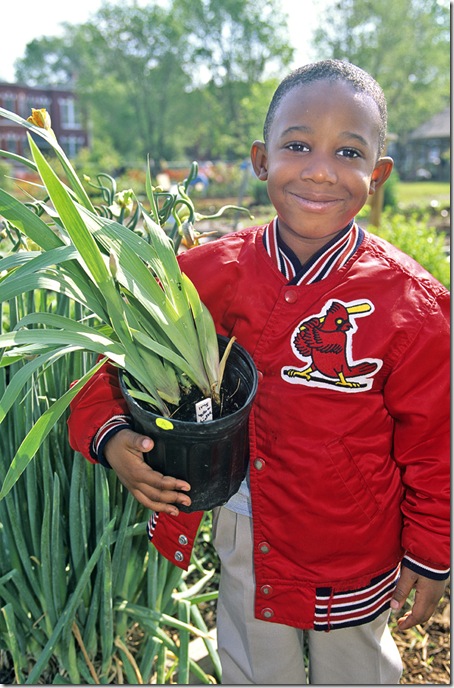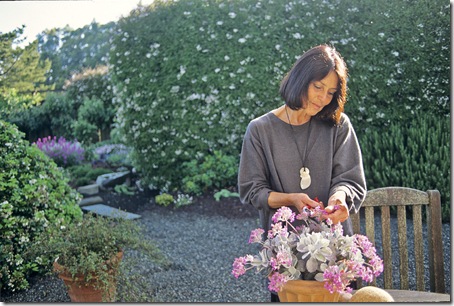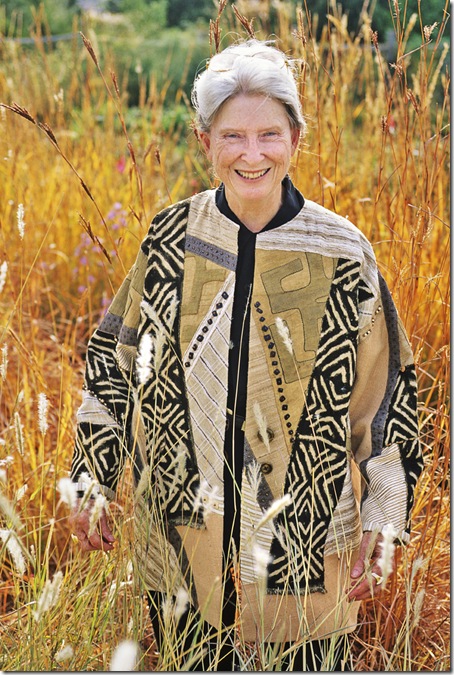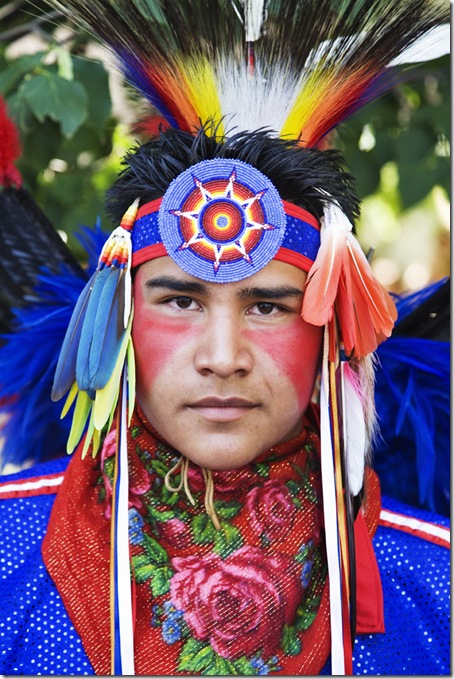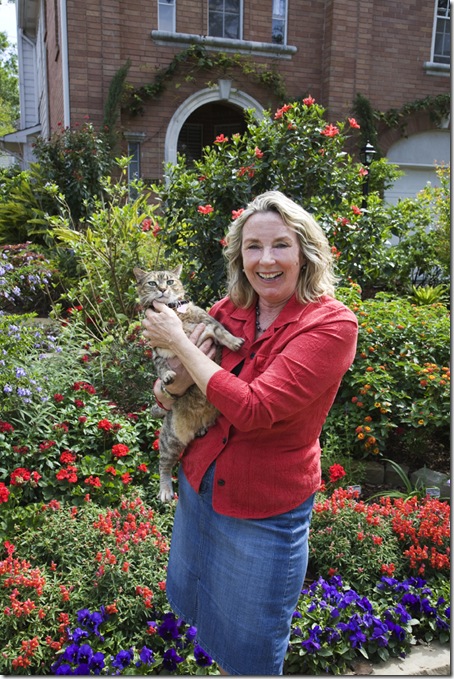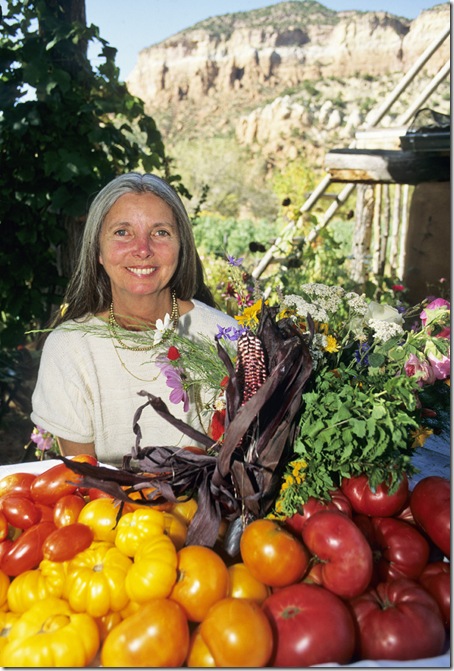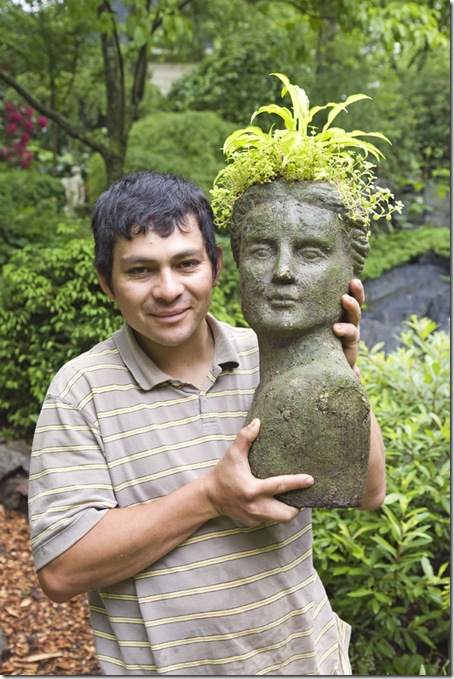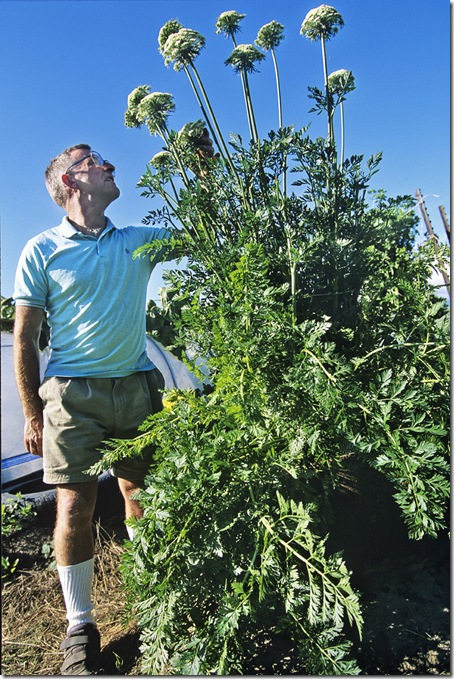I’m delighted that Charles Mann, photographer extraordinaire is returning to judge this November’s Picture This contest. Charles, who has been a freelance and stock photographer for over 16 years, specializes in imagery of gardens, horticulture, New Mexico culture, and southwestern scenic landscape. He has photographed four books : Cutting Edge Gardening In The Intermountain West, Secret Gardens of Santa Fe, Viva Guadalupe and Celebrating Guadalupe…..Fran Sorin
Without further ado, here’s Charles!!
“Gotcha!
Take a shot at your friends and neighbors
I’ve chosen a Contest topic that, I imagine, often strikes fear into the hearts of most photographers and their subjects as well – portraits. As often as we want to see their beautiful gardens, we are curious about the beauty of the gardener as well. It is not only interesting, but fun to include faces as a part of our photo-making repertoire, and it does not have to be as daunting as it seems.
I’m no expert, but here are a few of my own guidelines and generalities that have helped me:
TURN THE SUBJECT’S BACK TO THE SUN
Shooting with subject’s back to the sun or turned with the sun coming from their side or over their shoulder does a lot to help set up a better portrait. For one, the subject’s face is relaxed and their eyes are open. The sunlight often produces a very pretty halo around the hair, with pleasing dappled light in the background. Watch out for lens flare !
ALWAYS USE A FLASH
The” Back to the Sun” rule only works really well when using a flash. Nowadays, I always use a flash when shooting people, even in bright sunlight. When the light is soft and diffuse, you can turn the flash off, but I prefer to use it even then.
Shooting with a flash opens up the shadows, makes the face the brighter element in the overall shot and has the bonus effect of flattening out wrinkles! Most digital cameras work miracles with a flash right out of the box. However, learning to adjust the intensity of the background by using the exposure compensation control and adjusting the intensity of the flash effect by dialing the flash output up or down can bring all the elements into a pleasing balance. Many photographers may not know that the flash exposure is a function of the f-stop and ASA settings alone and is not affected at all by the shutter speed. Special dreamy effects can sometimes be achieved by using a very slow shutter speed with the flash, but this is a hit-or-miss strategy best tried when shooting a situation with bright ambient lights in a dark setting, like the State Fair at dusk. For most situations, keep the shutter speed up to 1/ 125 sec at a minimum. Set the flash to “second curtain sync.”
Advanced photographers who want to take flash work to the next level can try the even more satisfying technique of holding the flash away to the side of the camera, or using two flash units to create more complex off- camera lighting effects, but the on-camera flash can do wonders with much less hassle.
USE A WIDE f STOP AND A FAST SHUTTER SPEED
Traditionally, dialing up the shutter speed and using the resulting low f-stop ( f/4.0 or f/ 5.6, say ) assures a helpful blurry/ dreamy backdrop and a sharp face focus, even if the subject is moving or the cameraman is moving. I suggest you focus on the eyes. One important lesson I have recently learned is that these super-wide-open apertures can result in softness around some facial features. Using an f-stop of f/8 is a better guarantee that all your subject’s face will be entirely sharp. This still leaves a small enough depth of field to blur most back ground details that are not very close behind. Use the ASA adjustment, increasing it when needed, to keep the f-stop near to f/8 and thus keeping the shutter speed up to at least 1/160- 1/200.
PAY ATTENTION TO THE BACKDROP
In almost every circumstance, the backdrop is as important as the subject. The overall image is a figure-background combo. Even when blurry, the color tone and luminescence of the background, not to mention the absence of distracting bright spots or recognizable intruding objects, is an important element in the shot. Don’t blow a good shot with a crummy backdrop!
AVOID THE ALFRED HITCHCOCK EFFECT
Remember the outline of his shadow painted on the wall behind his silhouette? When shooting a vertical portrait with an on-camera flash and no bracket, this can l happen if your subject is standing close to a wall or other background. Move them to an open space away from the wall. When shooting verticals, always tilt the camera and flash so as to fill into the shadows. Another handy technique when indoors is to aim the flash at the ceiling and bounce the flash light to fill the image with reflected light.
SHOOT A LOT OF IMAGES
A jape that I have often repeated at my programs is that the difference between a professional photographer and an amateur is that the amateur only shoots one shot. The advent of digital has freed us from the paranoia of burning lots expensive film. When shooting a portrait, it pays big dividends to shoot a lot of frames, as faces change in many subtle ways, often second by second. Catching a self-conscious subject off guard often results in that special smile, so turn on the charm and blaze away!
We learn a lesson from every photograph taken, however fabulous or abysmal. Shooting a lot of photos is the best teacher. If this notion exhausts you, then perhaps photography is not your true passion!
USE THE FORCE OF PHOTOSHOP
Learning to command some basic skills in Photoshop can guarantee that any competent capture has a chance to become a good, and possibly a great photo. Competent capture means a sharply focused subject and a file that is not overexposed in any part. Keep the capture histogram curve away from the right hand margin!
Lastly:
WHAT MAKES A GREAT PHOTOGRAPH IS A GREAT SUBJECT AND GREAT LIGHT. WHAT KEEPS YOU OUT THERE SEARCHING IS PASSION.
As I mentioned, we learn something from every photo we take. I’ve included here a selection of my own past and present efforts. Some were more successful than others, but for me, each was a step on a journey.
Of course, good portraits and pictures are not defined by clinical perfection. They need soul, heart, enthusiasm and inspiration. Get there by shooting photos of the things and people you truly love!”
RULES FOR ENTERING THE CONTEST
1. You must have an active blog in order to participate. To be eligible for judging, you need to leave us TWO LINKS – a direct link to the image, and a link to your blog post that includes the image (and that says you are entering the Gardening Gone Wild Picture This Photo Contest )– in a comment on this post. Your links need to be correct in order for your photo to be entered into the contest. If need be, check out previous Picture This contests to see how others have done it.
2. You are allowed one entry per contest; your photo must be able to be copied from your site. That makes it possible for us to collect all the entries in one place for easier judging.
3. The long side of the image should be around 800 pixels. If your photo is much larger than that, please re-size
4. Because of the enormous amount of responses we receive, you can’t change your mind once you enter a photo into the contest.
5. The deadline for entries is 11:59 PM Eastern time on Tuesday, November 23, 2011. There are no exceptions.
All entries will be posted in the Gallery within 48 hours after receiving them.

